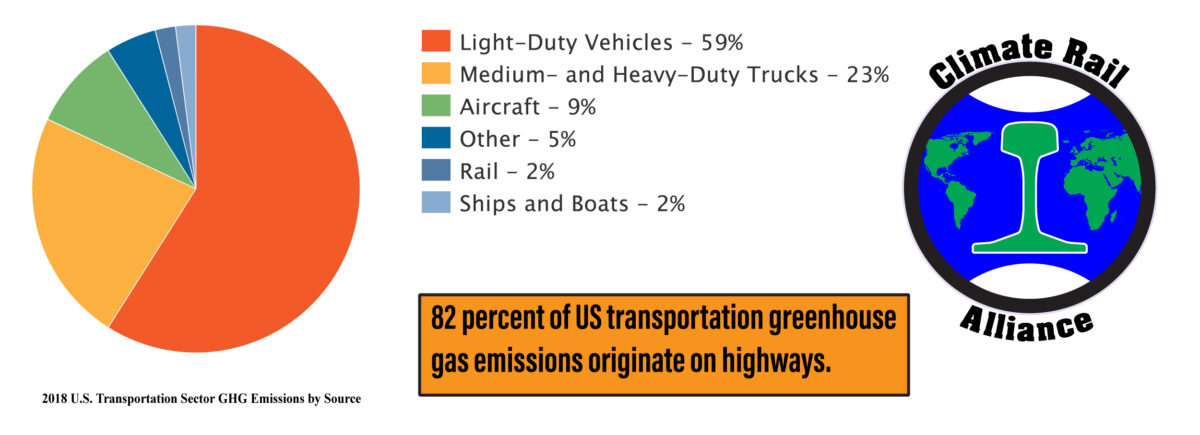In addition to the issues that are about to bring about a nationwide railroad strike, there is another open safety issue. The railroad industry wants to operate trains with only one person on the train. This is unsafe in many ways, and even against the industry’s safety rules, but the bottom line is at stake.
The comment entry form for the proposed FRA rule is here: https://www.regulations.gov/document/FRA-2021-0032-0001
Once again, the railroad industry’s masters, the hedge fund managers, want to squeeze more for increased profits. If a few people are killed or injured in the process or lots of valuable stuff gets bent, they don’t care as long as doing all that is less expensive than doing things safely.
Please comment supporting a required minimum of two people responsible for operating a train.
Comments are due before 1159 pm ET September 26.
Here is what I entered as a comment:
Docket FRA-2021-0032 Proposed Rule to Enhance Train Safety, Codify Train Crew Size Requirements
The industry has stated that with current safety systems (PTC) that a second person in the locomotive cab is no longer necessary because PTC replaces the redundancy (observing signals, signal compliance) the second employee provides. That is only a small part of the essential nature of at least two people on a train crew.
• A second person is required any time handbrakes must be applied.
• A second person is required any time a train must cross a highway crossing at grade when the signals are defective or inoperative.
• A second person is required in CTC or interlocking limits when a dual control switch must be lined by hand.
• A second person is required when the route a train must take includes lining a hand throw switch.
A “roving conductor” in a highway vehicle is not an acceptable substitute.
• A stopped train can and has created traffic conditions that prevent assistance coming by highway vehicle from accessing the train.
• A train stopped by an undesired emergency application (UDE) can pose hazard of a runaway if handbrakes are not applied in a timely manner.
• A significant part of the railroad network is not accessible by highway vehicle.
• A significant part of the railroad network is in remote areas. A second crew member who is not on the train will be of no use in the case of medical emergency.
• A train stopped for a substantial length of time poses a hazard to communities that depend upon crossings at grade. The delay waiting for a “roving conductor” can pose a significant hazard to communities along the line as well as a significant inconvenience.
• Rail transportation is an essential response to the climate emergency. The US rail system is already underutilized. Considering train miles per mile of track, adjusted for US train length, is 11th in the world. There are generally small areas of massive congestion separated by long expanses of empty track. The current method of operation and business management of the railroad industry is already detrimental to the increased use of rail transportation and the essential mode shift from highway to rail. Subjecting the network to even more extensive delays for disabled trains waiting for a “roving conductor” to assist is not acceptable.
• The inaccessibility of the train may be mitigated if the “roving conductor” is using a hyrail vehicle; however that requires the conductor to also be qualified on Maintenance of Way rules. A high rail vehicle approaching a train that has experienced a UDE on an ascending grade from behind is at risk if there has been delay in reaching the train to apply handbrakes.
Train inspections by crew members are required by rules (e.g., GCOR 6.29.2, NORAC 72). A crew of only one person cannot inspect both sides of the train as required.
Fatigue among train and engine crew personnel is a substantial problem in the railroad industry. There is no defined time to be on duty, thus no defined time for rest. The projected on duty time for a crew member regularly changes several times while the crew is off duty. For example, it is possible for a person to sleep anticipating a 9pm call, be fully awake at 7pm, and be called for 5am,, when it is time to sleep again. Accident reports regularly cite the number of hours that a crew is off duty, making them legally rested, without citing the train lineups that were published between the off duty and on duty time. A second, questionably rested, person in the locomotive increases that chance that a condition requiring attention (e.g., person or vehicle on the track, obstruction or defect) will be detected.
Not only is a second person necessary, on the extreme length trains currently being operated, a third person, located at the rear of the train, is necessary. A brisk walk is 4 mph. When walking ballast and looking for the cause of a UDE, walking speed is no more than two mph. That’s three feet per second. Inspecting a train 15,000 feet in length will take approximately 1 hour 20 minutes. Were the train stopped on an ascending grade, that amount of time before applying hand brakes on the detached portion is excessive. As well, a third crew member on the rear of the train reduces inspection time by 50 percent, a significant amount when considering blocked highway crossings and line capacity.
Technical safety systems (e.g., PTC) have not replaced verbal communication of mandatory directives and may not in the foreseeable future. Safety of verbally communicated mandatory directives is increased when more than one person on the train is listening to the transmission and repeat. A second person understanding and comparing the content and meaning is also essential. This is particularly true in verbally transmitted written authority (e.g., Track Warrant Control).
